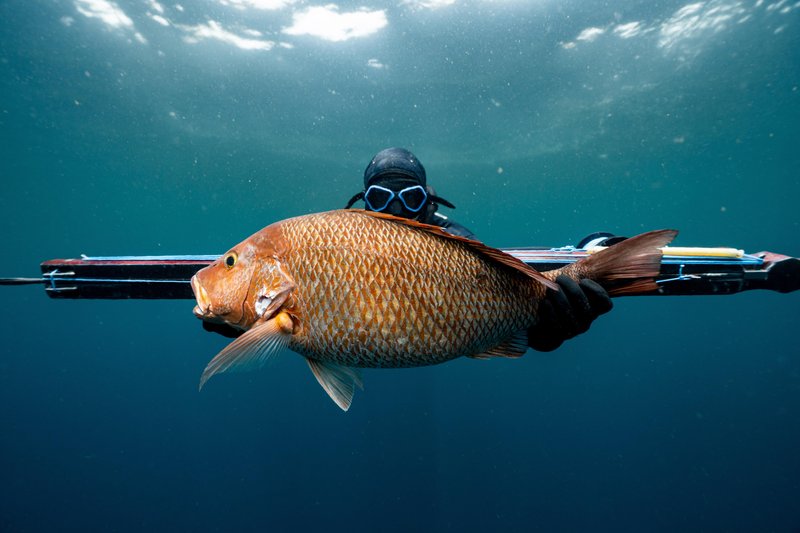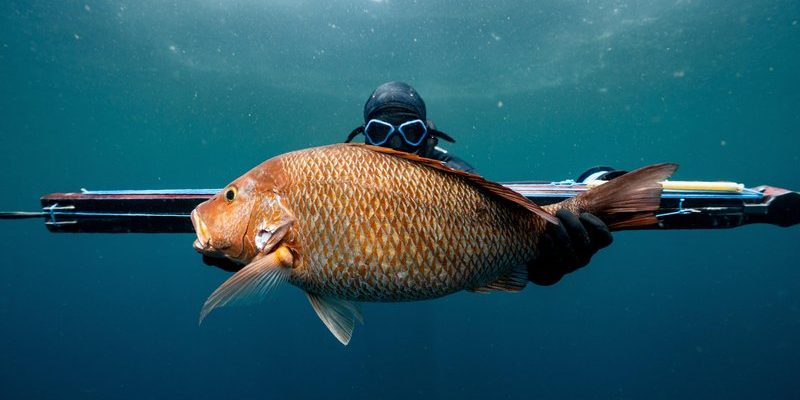
Snappers are quite the group of fish, found in both warm and temperate waters. They belong to the Lutjanidae family, which includes several species like the famous red snapper and the yellowtail snapper. What sets them apart is their ability to adapt brilliantly to their surroundings. Let’s dive deeper and look at how these adaptations allow snappers to thrive underwater.
Exceptional Vision
One major adaptation that helps snappers is their exceptional vision. Think of snappers as the sharp-eyed detectives of the sea! They have large, forward-facing eyes that give them a wide field of vision. This is crucial for spotting both prey and predators. Their eyes have specialized cells that allow them to see well in low light conditions, which is often the case in deeper waters.
Let’s break this down a bit. Snappers can detect movement from a distance, making them adept hunters. If you’ve ever noticed how fish react in a flicker, that’s their sharp eyesight kicking in. This keen vision helps them find food like smaller fish, crustaceans, and even squid. It’s not just for hunting, though; their vision also helps them avoid becoming a meal themselves.
Did you know? Some species of snapper can even see in color! This allows them to differentiate between various types of prey and other objects in their environment, giving them an advantage as they navigate through their underwater homes.
Camouflage and Coloration
Another fascinating adaptation is their camouflage and coloration. Snappers have a range of colors that help them blend seamlessly into their surroundings. This isn’t just about looking pretty; it’s a critical survival tactic! The colors of a snapper can depend on their habitat and the specific species. For instance, a red snapper has a bright reddish hue, while a yellowtail snapper sports vibrant yellow accents.
By blending into coral reefs or rocky substrates, snappers can hide from predators—which is vital in such a competitive habitat. This ability to camouflage also helps them ambush prey. Imagine sneaking up on your favorite snack; that’s what snappers do when they spot an unsuspecting fish!
Their coloration can even change slightly based on their environment or mood. It’s like having a wardrobe that adapts to every occasion—only, in this case, it’s all about survival!
Strong and Agile Bodies
When you see a snapper swimming, you might be struck by their strong and agile bodies. Their muscular build allows them to swim quickly in bursts when chasing after prey or escaping danger. It’s like having a sports car in the fish world; they can dart around with impressive speed.
These bodies are streamlined, helping to reduce drag as they swim. This means they can move efficiently through the water, covering distances quickly. Their tail fin, or caudal fin, is well-developed, providing extra propulsion. Picture an athlete with powerful legs; that’s exactly how a snapper generates speed!
In addition to speed, their agility allows them to navigate through complex underwater structures, like coral reefs. Being able to twist and turn quickly can mean the difference between catching dinner or becoming someone else’s dinner.
Specialized Feeding Habits
Snappers have specialized feeding habits, which are another key to their success. They’re classified as carnivorous, meaning they primarily eat other fish, but their diet isn’t just limited to that. Depending on what’s available, they’ll munch on crustaceans, mollusks, and even zooplankton.
These fish have sharp, pointed teeth to help them grip and tear their prey. Think of them as the “steak knives” of the ocean! This adaptation is ideal for their hunting strategy, which often involves ambushing unsuspecting prey. They can also adjust their hunting techniques based on what’s available in their habitat. So, if one favorite dish isn’t around, they gracefully pivot to other options, showcasing their adaptability.
This flexibility in diet ensures that snappers can thrive in various environments. Whether they’re in a bustling reef or a more subdued sandy bay, they find ways to get their meals.
Social Behavior and Group Living
One of the more interesting adaptations of snappers is their social behavior. Many species prefer to live in schools, which helps them in a few ways. First, there’s safety in numbers. When a predator approaches, a large school can confuse it with sudden movements or flashes of color. This makes it harder for the predator to target just one fish.
But that’s not all! Social living enables snappers to communicate and establish pecking orders. They use body language and colors to convey their feelings or intentions, almost like a secret language. You might be wondering how that works—imagine how humans interact through gestures and expressions, and you get the idea!
Schools can also increase foraging efficiency. With many eyes on the lookout, they can find food sources more easily and share the space, allowing individuals to focus on hunting.
Reproductive Strategies
Last but certainly not least, let’s tackle their reproductive strategies. Snappers are known for their unique spawning behaviors. Many species are protandrous hermaphrodites, meaning they start as males and can eventually become females as they grow older. This means that they can adapt their roles based on the needs of their population.
During spawning seasons, large groups come together to mate, creating a spectacle of activity. Males often compete for attention, displaying bright colors and performing rituals to attract females. This strategy not only maximizes their chances of reproduction but also ensures the genetic diversity of their populations.
These fascinating reproductive habits also indicate how adaptable these fish can be. By changing roles, they help maintain a healthy balance within their communities, further supporting their thriving populations.
Snappers are more than just colorful fish swimming in the ocean; they are remarkable creatures that showcase the beauty of evolution. From their keen eyesight to their social behaviors and reproductive strategies, each adaptation plays a crucial role in helping them thrive in underwater environments.
So, the next time you see a snapper, take a moment to appreciate all the amazing ways they’ve evolved to survive and flourish. It’s like watching a well-rehearsed play unfold, where each actor is vital to the show’s success. As we continue to learn about these stunning creatures, we gain insight into the delicate balance of life beneath the waves.

